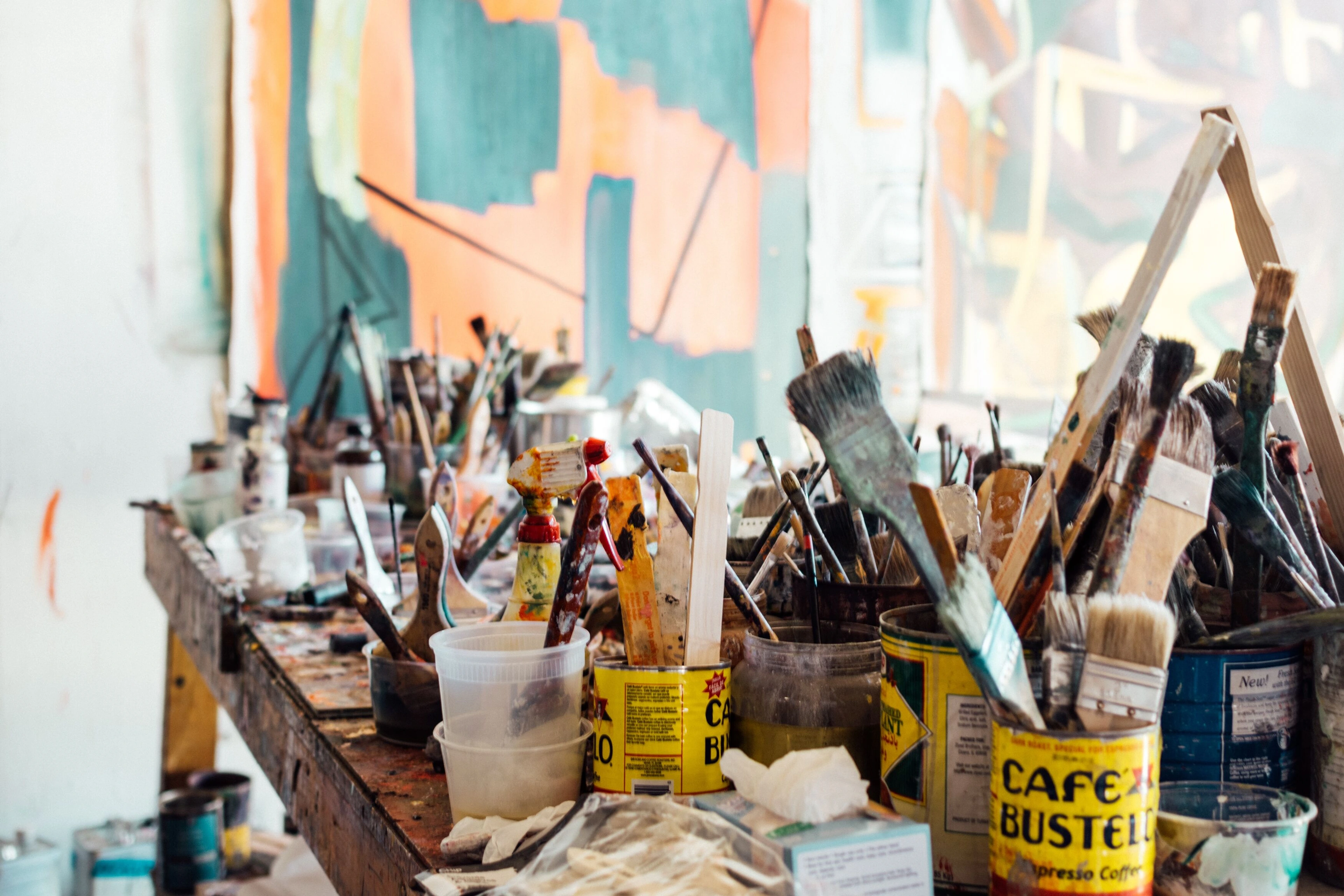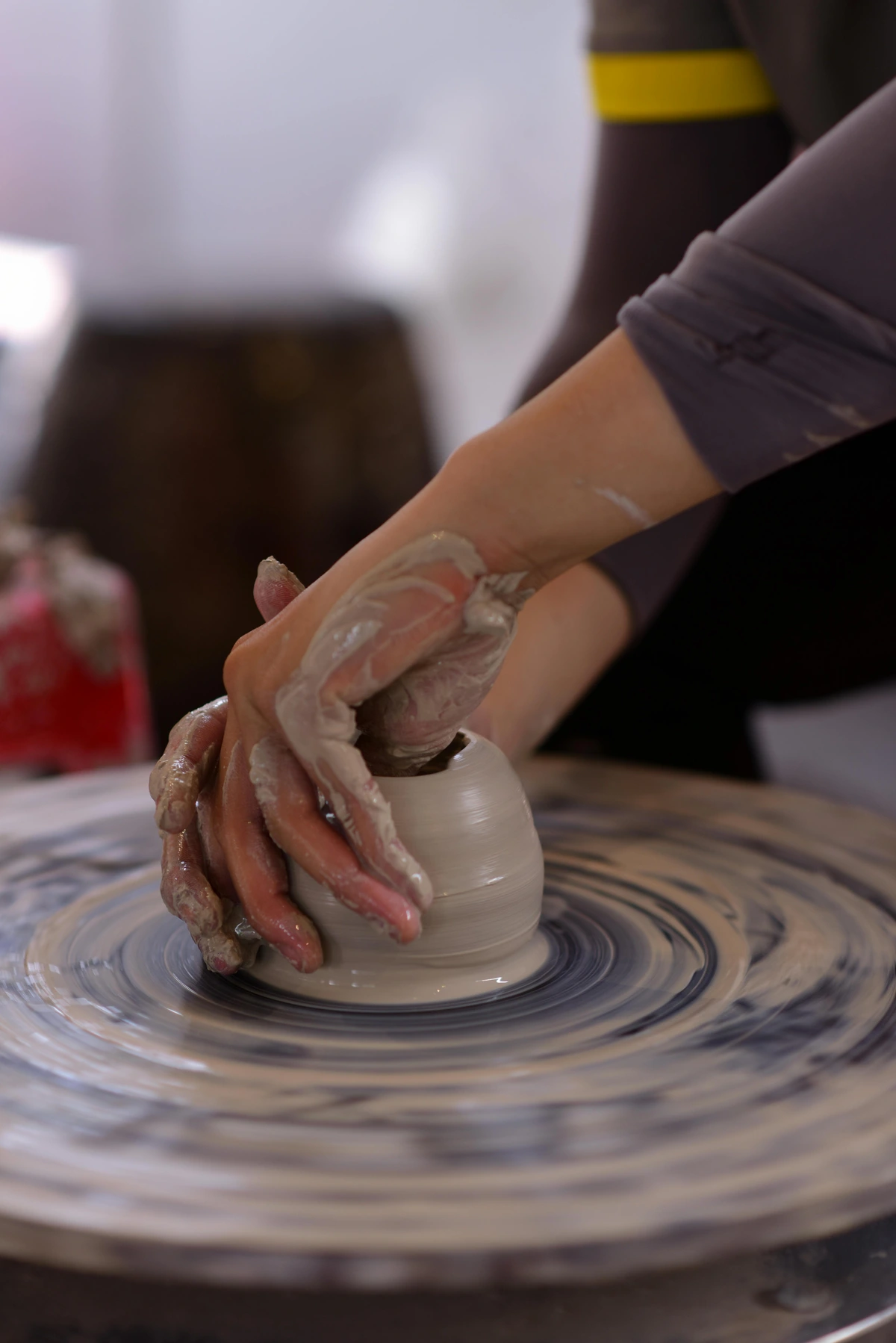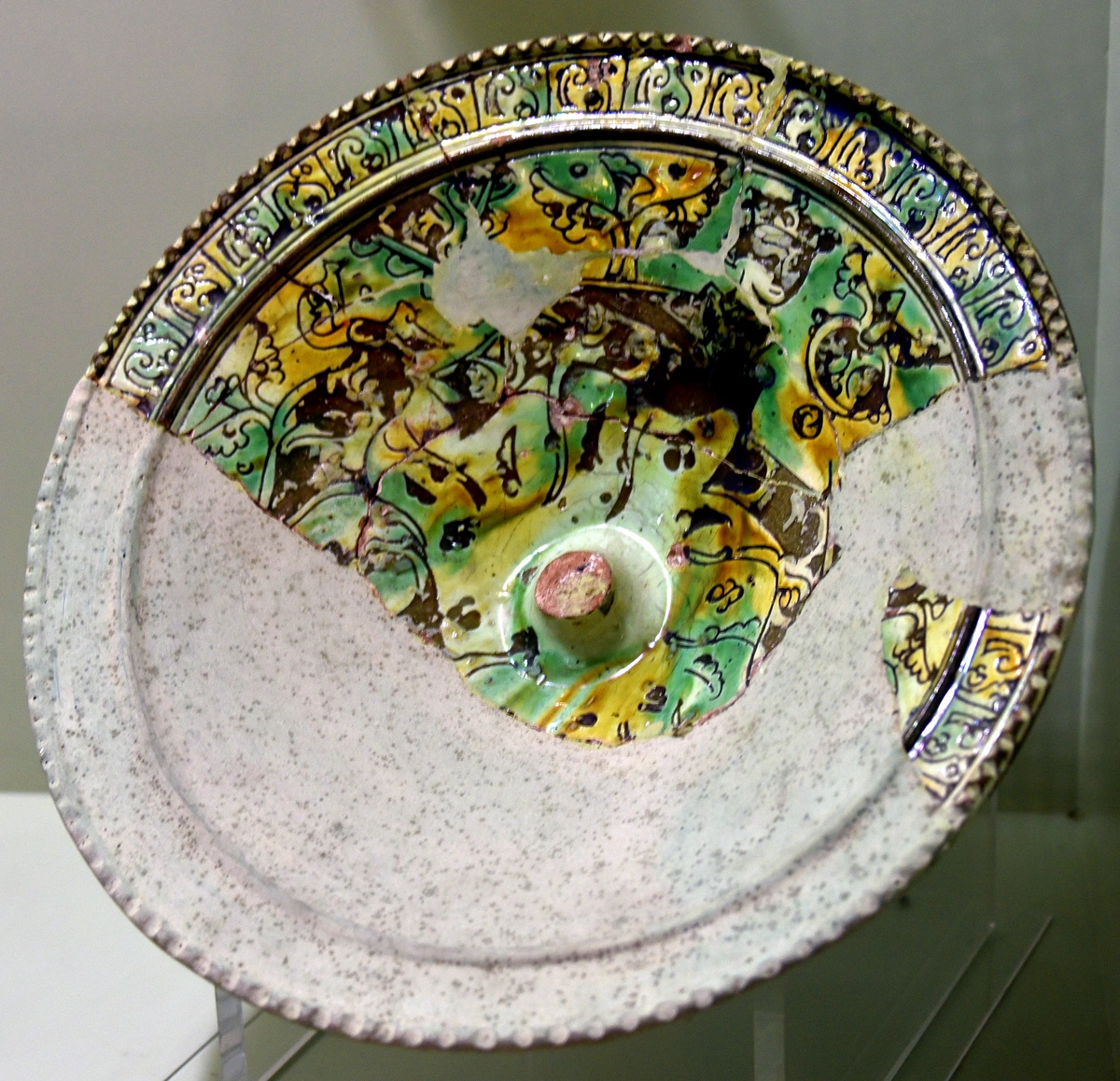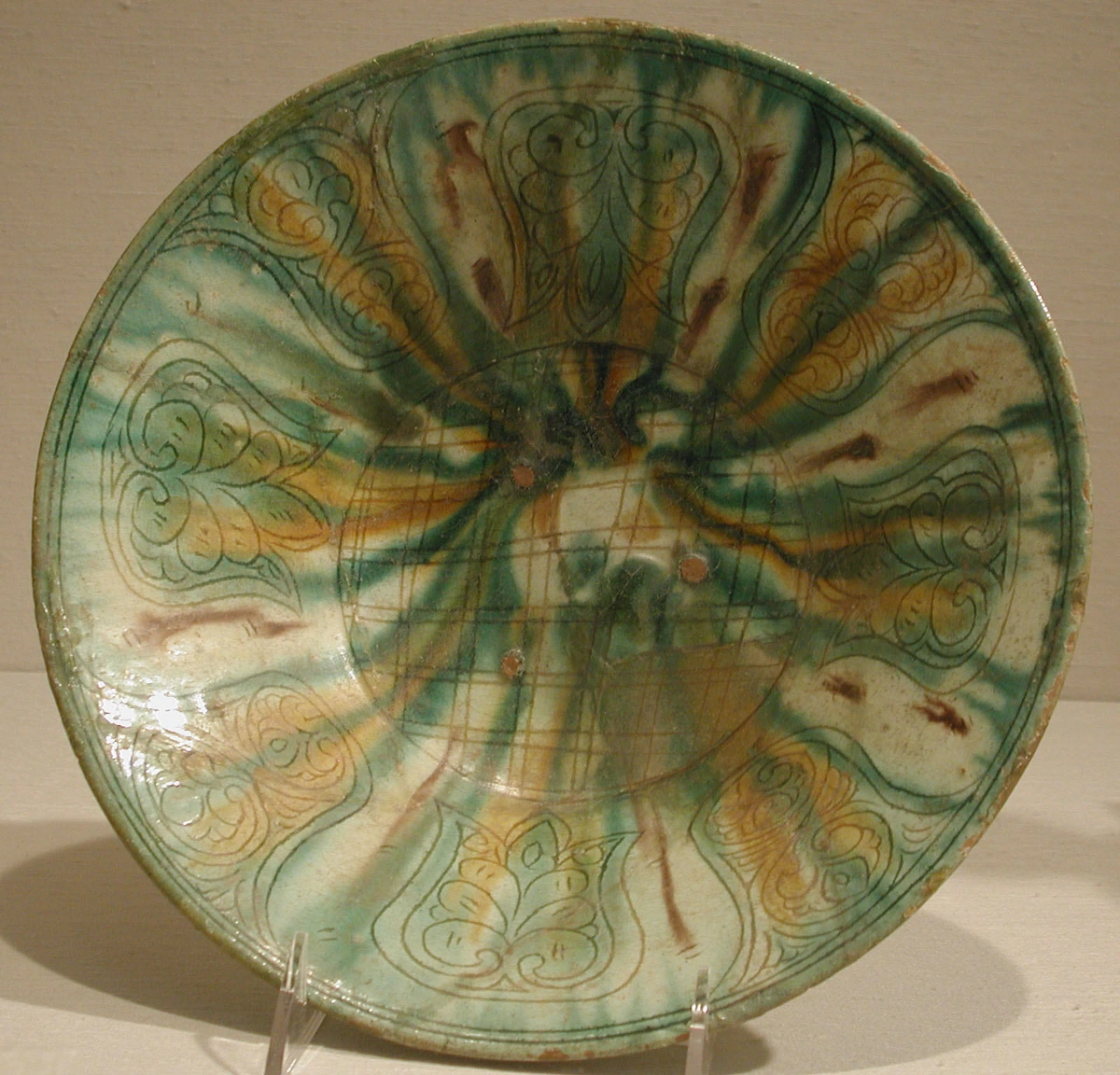
Sgraffito: The Enduring Art of Unveiling Layers & My Artistic Journey
Unearth the timeless art of sgraffito: scratching layers to reveal hidden beauty. Explore its ancient roots, diverse techniques, profound meaning in contemporary art, and my own creative process.
Sgraffito: The Enduring Art of Unveiling Layers & My Artistic Journey
Sometimes a word just sounds... well, a bit intimidating. 'Sgraffito' was one of those for me. Honestly, it sounded more like a fancy Italian dessert or maybe a particularly energetic dance move than an art technique. I pictured serious art historians nodding wisely, and I definitely wasn't one of them. But then, as it always happens in the art world, I stumbled into it. And what I found beneath that intimidating name was actually quite beautiful, deceptively simple, and profoundly resonant. It’s an art form all about revealing what’s beneath the surface, literally scratching away the top layer to unveil hidden depths. This very act of scratching away, of unveiling something previously hidden, resonates deeply with me as an artist. There’s a quiet power in subtraction, isn't there? It’s not always about adding more; sometimes, the magic truly happens when you take something away. It’s a philosophy I find myself wrestling with, not just in my art, but in life itself. So, let’s peel back the layers on this fascinating technique, shall we?
What Exactly is Sgraffito?
So, let's get down to brass tacks. Sgraffito is an Italian word that quite literally means "to scratch." And that, my friend, is precisely what the technique involves. It's a method where you apply layers of material—think plaster, clay, even paint—and then you carefully scratch away the top layer to expose a contrasting color, texture, or even the material of the layer(s) underneath.Think about it like this: remember those scratch-off lottery tickets? You scratch the silver to reveal numbers. Or an old school blackboard where you write (effectively scratching away the chalk dust) to reveal the dark board beneath. That's the essence of sgraffito. It’s a process less about adding pigment or material, and more about subtracting to create an image or design. While it shares the principle of material removal with techniques like woodcuts or linocuts (where you carve to create a raised printing surface), or etching (which uses acid to bite into metal), sgraffito is much more immediate and direct. And you could even argue it has cousins in things like mezzotint in printmaking (where you roughen a plate and then smooth areas to create tones) or the broad concept of carving in sculpture. But sgraffito? It's right there, on the surface, a direct conversation with layers, scratching directly through the top layer to expose what lies directly beneath, often creating a drawing-like effect. This focus on negative space and the interplay of hidden and revealed forms makes it a powerful way to explore fundamental elements of design in art.
A Stroll Through Time: The Enduring Legacy of Sgraffito
This isn't some fleeting modern trend that'll be gone tomorrow; sgraffito has been around for ages. I mean, we're talking ancient times. Early forms of incised decoration, which share sgraffito's subtractive spirit, appeared on humble pottery and even sophisticated stucco work in ancient Greece and Rome, laying the groundwork for more complex applications. These early examples hinted at the potential for revealing underlying layers, though the technique truly flourished and gained its distinctive character in later periods. It really took off in Islamic art, particularly in ceramics, where artisans meticulously carved through layers of slip to expose contrasting colors beneath, creating incredibly intricate patterns and designs on pieces like lusterware and tiles. The precision and artistry are just breathtaking when you consider the tools they had. Even in Central Asia, on glazed pottery from regions like Nishapur, this technique allowed for stunning visual depth. Across the globe, similar incised decorative practices, precursors to sgraffito, also emerged, from ancient Chinese pottery to the early folk art traditions in parts of Europe, showing a universal human impulse to decorate by revealing.

Then, it made a magnificent comeback during the Italian Renaissance. Masters weren't just busy painting frescoes; they were decorating entire building facades with sgraffito. Picture the stately palaces of Florence, where artists adorned exteriors with grand illusions of depth, texture, and storytelling. It’s truly a testament to the technique's versatility and its surprising durability. These weren't just pretty pictures; they were histories etched into the very fabric of architecture, designed to last for centuries.

These architectural masterpieces, often depicting mythological figures, allegories, and intricate floral motifs, transformed ordinary walls into vibrant canvases, speaking volumes to passersby. They combined artistic skill with practical application, proving that art could be both beautiful and integral to daily life.
The Magic in the Making: How is it Done?
Having wandered through time and admired the masters, you might be wondering, how does one actually conjure this magic? How do these intricate layers come to life? "Just scratch it," sounds simple enough, right? But there’s a certain finesse, a delicate dance involved. Let me tell you, it's not always as easy as it sounds, especially when you're first figuring it out.
Materials and Application
First, you need your base layer. This could be a dried, perhaps colored, plaster or a layer of unfired clay. For walls, we're talking about plaster, often lime-based plaster, which is wonderfully breathable and durable, but demands precise timing. Clay, of course, needs to be well-prepared – a good, workable clay body that can handle layers of slip without cracking or flaking during drying and firing. Then comes the crucial part: applying the contrasting top layer. This might be a different colored slip on pottery, or a darker pigmented plaster over a lighter one on a wall. The beauty of sgraffito often lies in the interaction between these two distinct layers, a dialogue born of their contrast.
The Scratching Process and Tools
The scratching itself is done while the top layer is still wet enough to allow clean removal, but firm enough not to smudge or distort the underlying layer. Getting that timing right is absolutely everything, and honestly, that’s where my own patience often gets a good workout! I remember one frustrating afternoon trying to scratch through a layer of paint that was just a little too dry, resulting in a flaky mess rather than a clean line. It was a good lesson in the importance of precision. I once spent an entire morning trying to get a fine line on a piece where the top layer of slip had dried just enough to resist, but not so much that it wouldn't chip. It was a battle of wills, and the clay definitely won that round, teaching me a rather humbling lesson about respecting the material's readiness. Beyond timing, other common pitfalls include cracking in plaster if it dries too quickly, smudging in wet paint if you’re not careful, or inconsistent lines in clay if the underlying layers aren't applied evenly. It truly is a technique that demands attention to detail at every step.

The tools can be anything from simple sticks and styluses to more specialized instruments. It's all about precise and deliberate removal. The revealed underlayer then forms the lines, shapes, and patterns of your design. It's a bit like drawing in reverse, which is pretty cool, and a fantastic way to explore the principles of form and design in art through subtraction.
Here are some common tools you might encounter: - For Ceramics: loop tools (for broad areas), fine needles or sgraffito tools (for intricate details), wooden styluses (for varying line weights).- For Architectural Sgraffito (Plaster): chisels (for carving), awls (for piercing), spatulas (for scraping larger sections).- For Painting: palette knives, the blunt end of a paintbrush, combs, or even specialized rubber-tipped tools (to create diverse marks and textures).
Sgraffito Across Mediums: More Than Just Walls
While architectural facades offer grand canvases, sgraffito truly shines in the world of ceramics. The layering of colored slips or glazes, followed by scratching through them, allows for such incredibly vibrant patterns and intricate details. I find the resulting texture so appealing, almost begging you to reach out and touch it. It’s a very tactile experience, both to create and to observe. The durability and visual richness achieved in ceramics make it a favored medium for this technique, from ancient Anatolian plates to contemporary artistic bowls.


And it’s definitely not just confined to ancient or historical art! Many contemporary artists still use sgraffito today, incorporating it into paintings, sculptures, mixed media pieces, and even printmaking, to add texture, dynamism, and those delightful unexpected layers. Take, for instance, contemporary ceramicist Jun Kaneko, known for his large-scale, vibrant ceramic forms that sometimes feature sgraffito elements, or painters who use oil or acrylic layers to scratch through, creating expressive marks and hidden color interactions. Beyond Jun Kaneko, think of muralists like Eduardo Kobra, who sometimes employs techniques akin to sgraffito in his large-scale, layered street art, or contemporary painters such as Anselm Kiefer, whose heavily textured works often involve scraping and incising to reveal hidden depths and materials.
And in my own digital studio, I find myself performing a sort of 'virtual sgraffito.' I'll stack abstract forms and vibrant colors, then use digital masking and erasing tools that remove rather than add, carving into pixels to discover new visual relationships. It’s a fascinating way to explore depth and contrast, much like the physical act, but with the added blessing (or curse, depending on the day!) of an undo button. If you're curious about my own artistic journey and how these inspirations tie into my style, you can always check out my timeline or explore my abstract pieces.

So, next time you're out, maybe pause and look for those subtle lines and textures in everyday objects or public art – you might be surprised where sgraffito pops up, even in forms you hadn't considered. It’s a testament to the enduring power of creation through removal.
Why I'm Drawn to Sgraffito: A Personal Reflection (And Its Enduring Philosophy)
Perhaps it's the raw honesty of the technique itself that captivates me. It doesn't try to hide; it reveals. Every scratch, every mark, feels incredibly intentional. There’s a commitment to the line, a dedication to the form that I deeply admire. It’s not about quick fixes or painting over mistakes; it’s about deliberate creation through subtraction, and I find that immensely powerful.For me, art is often about finding the essence, stripping away the superficial to uncover what truly lies beneath. Sgraffito feels like a perfect metaphor for that process, not just in art, but in life itself. It's about the deep truth that sometimes, by stripping away the inessential, we find the core of something profound. This isn't just an art principle; it’s a life philosophy, isn't it? It’s about getting rid of the clutter, the noise, the unnecessary, to uncover the core truth or inherent beauty. In a world constantly urging us to accumulate, sgraffito offers a quiet counter-narrative: sometimes, less really is more, and true meaning emerges from what we intentionally leave out. It’s also a fantastic way to create texture and depth, two elements I constantly play with in my own contemporary art. If you've ever seen my art for sale, you'll know I love exploring how different textures and layers can evoke emotion and add dimension to a piece. Of course, it's not without its challenges. The permanence of the marks means precision is paramount; you can't easily 'undo' a scratch. This can be intimidating, demanding a certain decisiveness that takes practice to master. But perhaps that very challenge is part of its enduring appeal – the commitment required for each deliberate stroke.
FAQ: Scratching Deeper into Sgraffito
Q: Is sgraffito difficult to learn?
A: Like any art form worth pursuing, it definitely takes practice. The basic principle of scratching through a layer is simple enough to grasp quickly; you could start with simple drawing tools on layered colored paper, for example. However, achieving truly intricate, clean, and expressive designs, especially in mediums like ceramics or fresco, requires skill, a steady hand, a deep understanding of your materials, and quite a bit of patience. Getting the consistency and wetness of your materials just right is often the biggest hurdle to mastery. But don't let that deter you—the joy is in the journey!
Q: Can sgraffito be done with paint?
A: Absolutely! It's a popular technique in painting. Artists often apply layers of different colored paints—often acrylics or oils—and then, while the top layer is still somewhat wet or tacky, they use various tools to scratch through and reveal the underlying colors. It’s a fantastic way to add dynamic texture, create interesting lines, and expose hidden colors in a painting, giving a piece a unique sense of history and depth. If you've ever seen an artist use the blunt end of a paintbrush to scratch into wet paint, that's a form of sgraffito.
Q: Is sgraffito only for historical or traditional art?
A: Not at all! While it certainly has a rich and ancient history, sgraffito is far from being a relic of the past. Many contemporary artists embrace the technique, using it in fresh, innovative ways across abstract paintings, modern ceramics, mixed media installations, and even digital art. It's a timeless technique that continues to evolve with artistic expression, proving its enduring appeal and adaptability in the modern art world.
Q: How durable is sgraffito, particularly in architectural contexts, and what about restoration?
A: That's a great question, and it speaks to the enduring nature of the technique. Historically, especially with architectural sgraffito on plaster, it was incredibly durable, designed to withstand elements for centuries. Think of those Renaissance facades! The layered nature itself provides a certain robustness. In ceramics, durability is significantly enhanced by the firing process and the application of protective glazes, which fuse the layers and make the surface resilient. However, in painting, its durability depends heavily on the medium and proper preparation; scratching into layers that aren't fully dry or properly bonded can lead to flaking or cracking over time. It's a testament to the artist's skill and understanding of materials across all applications. Restoration is a delicate process, often involving careful cleaning, consolidation of existing layers, and sometimes, meticulous re-application of layers in damaged areas by skilled conservators. It’s a painstaking process that respects the original artist's hand and the material integrity, which, if you ask me, is a whole other art form in itself.
Final Scratchings: A Last Thought
Sgraffito, for me, serves as a beautiful reminder that sometimes, the most profound and impactful creations come not from what we add, but from what we bravely choose to remove. It's a fascinating dance between layers, a secret revealed, and a powerful statement in its enduring simplicity. This technique has truly stood the test of time, much like the enduring beauty and rich history found within the walls of a grand institution like Den Bosch Museum, right here in my homeland – places where the careful preservation and thoughtful revelation of art's deeper stories are paramount. It’s about uncovering the truth, whether on a wall or within ourselves, inviting us to look beyond the immediate surface. So, the next time you encounter a piece of pottery, a striking wall decoration, or even a contemporary painting, take a moment. Look a little closer. You might just spot a hidden world of sgraffito, waiting to be appreciated for its ancient craft and timeless appeal.




